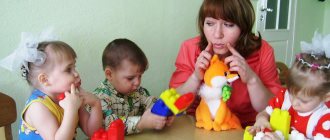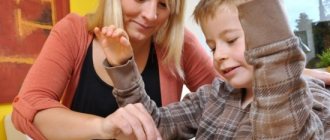Delayed speech development is not a death sentence, and if you contact specialized specialists in time, create a treatment plan, select medications and physical therapy for delayed speech development, you can return the child to the basic skills and abilities that he should have at his age.
Physiotherapy for delayed speech development is prescribed jointly by a pediatrician, neurologist, speech therapist or psychologist , after testing and passing certain tests. As a rule, along with medications, emphasis is placed on such procedures as:
- massage;
- transcranial magnetic therapy aimed at the headband;
- medicinal electrophoresis with nicotinic acid.
Physiotherapy for delayed speech development allows medications to penetrate the body faster and help in complex treatment.
Officially, the disease is treated up to the age of 7 years , so physiotherapy for delayed speech development can be prescribed regularly at short intervals to help restore speech function and enhance intellectual development, starting in early childhood.
The principle of choosing methods of physiotherapy for delayed speech development
Delayed speech development is not always associated only with problems of the speech apparatus, often these are manifestations of disorders with vision, hearing, nervous system , these can be the consequences of negative influences during intrauterine development, as well as if a natal injury has been diagnosed. Physiotherapy is prescribed for delayed speech development if in early childhood the child suffered injuries or certain viral diseases , infections, and such factors provoked a complication.
Hardware examinations for speech delay
To diagnose the disorder, it is important to conduct hardware examinations (very often neurologists neglect them, so parents can conduct them on their own initiative):
- Dopplerography of the vessels of the neck and head. It has been statistically proven that with motor alalia, problems with cerebral circulation (for example, venous congestion) are common. That is, the brain does not have enough nutrition. To exclude this factor, it is necessary to conduct a study, and based on the results, the neurologist will prescribe therapy if necessary. Usually, if there are such problems, treatment includes manual therapy - massage, osteopathy, as well as hirudotherapy, sometimes diuretics (to reduce ICP), etc.
- EEG – electroencephalogram . This study shows the level of maturity of the cerebral cortex by measuring its bioelectrical activity. As a rule, it does not provide a clear understanding of structural disorders, but it allows one to exclude epileptiform activity, paroxysmal activity and identify the most noticeable pathologies. For example, a violation of electrogenesis in the area of stem structures is often detected, which helps in making a so-called topical diagnosis.
- Evoked potentials. This examination can be performed separately on different sensory systems. For those who don't talk, I recommend doing ASEPs (acoustic brainstem evoked potentials), CSEPs (cortical auditory evoked potentials), and CEPs or P300s (cognitive evoked potentials). In different clinics they are done a little differently, but the main task of the research is solved perfectly everywhere: it is necessary to study the quality of processing of the auditory impulse at the subcortical and cortical level. This is NOT a hearing test. Physiological hearing may be normal, but the child may not understand spoken speech (speech auditory agnosia/sensorimotor alalia). Even with the understanding of speech preserved at first glance (“understands everything, but does not speak”), disturbances in the conduction of auditory impulses are often detected, as well as signs of structural subcortical dysfunctions (often the brain stem, cerebellum).
- MRI. Many parents are afraid to give their little child an MRI because... supposedly it is done under anesthesia. It is necessary to distinguish between anesthesia and sedation, that is, drug-induced sleep. These are different things. Sedation is not traumatic for the nervous system. Often you can do without this examination, but in some cases it may be necessary to clarify the diagnosis. Magnetic resonance imaging is very informative and accurate.
When should treatment be prescribed?
Defectologists, psychologists, and speech therapists claim that up to the age of 3, a child can independently catch up with the speech activity of his peers. If this does not happen, a set of procedures is prescribed.
electrophoresis sessions are aimed at stimulating neurons in the cerebral cortex and spinal cord. Modern transcranial magnetic therapy , aimed at the headband area, can improve the functioning of nerve endings in this area, improve metabolic processes, and restore blood circulation.
Types of medications
The most popular group of drugs for improving speech are nootropics. They allow you to improve nutrition and brain function. Due to this, cognitive functions develop.
The second most frequently used drugs are those with tissue-specific and antioxidant activity. These agents accelerate the renewal and restoration of neurons, while improving their functioning. Third on the list were neuroprotectors, which protect nerve cells from damage and exposure to environmental factors.
Cerebrolysin
This remedy is especially popular among neurologists. It helps improve metabolic processes in the cerebral cortex and prevent the death of its cells due to insufficient blood circulation. In addition to speech, the drug improves memory and increases the ability to concentrate.
1 ml of medicine contains 215.2 mg of peptides isolated from pig brain. Up to 5 ml of the drug is injected into the muscle. The dosage for a child is selected at the rate of 0.1-0.2 ml per 1 kg of weight.
If a larger amount is required, it is administered through a vein. More than 10 ml is indicated for use using an infusion system. The therapeutic course ranges from 10 to 20 days with a frequency of use of 1 time per day.
Cortexin
The drug is classified as a stimulant of cognitive activity of the brain. It makes it easier to remember and learn new functions, including speech. The medicine may be prescribed to protect the brain from severe stress.
One bottle contains 10 mg of active substance, which is polypeptide fractions soluble in water. Glycine in the amount of 12 mg was added as a stabilizer to Cortexin. Together they form a lyophilized powder that is pure white or yellowish in color.
Due to the small size of the molecules of the active substance, the drug is able to penetrate the blood-brain barrier. This is how it directly affects the neurons of the brain. As a result, the ability to learn and remember increases, and attention improves. The ability of the nervous system to respond to stimuli also increases. This increases the child's activity and curiosity.
Cortexin allows you to configure the body to produce the optimal amount of serotonin, dopamine and gamma-aminobutyric acid (GABA). At the same time, the bioelectrical activity of the brain is normalized. The drug also protects the brain from the effects of free radicals.
The medicine has the greatest effect when included in complex therapy. It is used as a remedy for disorders of cognitive functions, including speech, a drop in the level and speed of learning, and delayed psychomotor development. Other indications include head injuries and circulatory disorders in the vessels of the brain.
The administration of Cortexin is accompanied by painful sensations. Therefore, it can be diluted in a 0.5% solution of novocaine (procaine). For one injection, 1-2 ml of anesthetic is sufficient. This method is not suitable for children, as the risk of allergic reactions increases. Therefore, for them, the drug is diluted with isotonic sodium chloride solution and heated to 25-29 °C.
The medicine may form foam, so it should be drawn carefully along the wall of the bottle.
Injections are performed once daily (preferably in the morning) intramuscularly. The shoulder area or the front of the thigh is suitable for this (used for babies). The duration of therapy is 10 days. The dosage depends on the patient’s weight: less than 20 kg, 0.5 mg/kg is enough, and 20 kg and above - 10 mg. You can repeat the course of treatment after 3-6 months.
Gliatilin
The drug is packaged in 4 ml ampoules, each of which contains 1000 mg of choline alfoscerate. In total, a cardboard box can contain 1 or 3 bottles, sealed in a plastic cell. The medicine belongs to the group of neuroprotectors that protect neurons from damage.
Gliatilin acts on cholinergic receptors, as a result of which impulses are transmitted more quickly from one neuron to another. The drug also affects the membranes of nerve cells, facilitating this transition. Among other properties, the production of an optimal dose of acetylcholine is noted to maintain a calm state of the patient.
When taken orally, 88% of the active substance passes through the blood-brain barrier to neurons. Metabolites accumulate in the brain - glycerophosphate and choline. The first improves membrane permeability and impulse transmission, and the second has a positive effect on cholinergic receptors. The drug is excreted 85% by the lungs, breaking down to carbon dioxide, as well as by the intestines and kidneys.
Cerepro
This drug is considered an analogue of the previous one. Its 1 ml contains 250 mg of glycerylphosphorylcholine hydrate. The medicine is bottled in 4 ml bottles, which are grouped into 3, 5 or 10 pieces in thin cardboard packages.
The drug solution can be administered either intramuscularly or intravenously. It has no color or sediment. The medicine belongs to the group of nootropics and belongs to the central type cholinomimetics. It helps maintain the flexibility and integrity of the cell membrane by stimulating the synthesis of acetylcholine. As a result, blood flow in the vessels of the brain accelerates, and the patient’s cognitive abilities increase.
Actovegin
This medicine increases the metabolic activity of tissues, including the brain. One 10 ml ampoule contains 400 mg of blood hemoderivative, devoid of peptides (in dry form). Sodium chloride is also detected, which remains from the raw material for the drug and has no effect on the body.
Actovegin can be administered either intramuscularly or intravenously in the form of an injection or drip. It can cause severe allergic reactions, so many people prefer to conduct a hypersensitivity test before use.
Piracetam
The drug is a cyclic gamma-aminobutyric acid derivative. The nootropic effect is achieved due to the ability of the active substance to bind to the phospholipid heads of the neurocyte membrane. This allows you to improve its protective properties and increase functionality in general.
The drug also affects postsynaptic receptors, facilitating the transmission of impulses along neurons. It is prescribed to enhance intellectual activity, including the development of speech skills in a child. The effect is achieved by establishing interhemispheric interaction and enhancing intersynaptic conduction in the subcortical layers of the brain.
Piracetam improves memory and attention, increases learning ability and self-awareness, and increases the effectiveness of intellectual activity. However, it is devoid of psychostimulating and sedative properties. The optimal amount of the active substance is formed after 3 days of use and remains until the end of the course. The bioavailability of the drug is close to 100%. It easily passes through the blood-brain and blood-placental barrier. The accumulation of the drug occurs in the cerebral cortex, mainly in the occipital, parietal and frontal lobes, as well as in the basal ganglia and cerebellum.
How do physical therapy sessions work for speech delay?
Magnetic therapy and medicinal electrophoresis procedures are prescribed in a complex manner . Initially, the session time is specially shortened in order to monitor the child’s reaction. On average, a course of treatment consists of 10–12 procedures . Physiotherapy procedures for delayed speech development at the First Children's Medical Center are carried out under the supervision of specialists in a separate room. All hardware is certified and approved for use. The medical staff will help the child feel safe and able to tolerate painless procedures. If parents wish, they can be present during medicinal electrophoresis or magnetic therapy.
Additional methods include working with defectologists and correctional specialists, increasing the time spent with the child, activating social skills, and communicating with peers. Physiotherapy for delayed speech development can be prescribed at intervals of 2–3 months in the absence of contraindications. After courses of magnetic therapy and medicinal electrophoresis, improvements are noticeable in coordination of movements, motor function, as well as in psychological development: speech reserve increases, activity in communication with other children appears, and the range of knowledge expands.
To make an appointment with a doctor
Choose a doctor
Speech development
Moiseeva Olga Borisovna
Speech therapist
April 24, 2021
At what age should children start talking? If a child does not want to speak at two years old, should we sound the alarm?
Nowadays children begin to speak later than their peers 15-20 years ago. This is due to the environment, the peculiarities of the mother’s pregnancy and complications during childbirth. Out of 10 children who speak well for their age, 2-3 people, the rest with various speech delays.
By the age of two, a child should have the simplest two-word phrases: mommy give, mommy go, who came, etc. Boys begin to speak later than girls, closer to 2.5 to 3 years. If by the age of three a child speaks literally 10-15 words and does not connect words into phrases, this is already a delay.
Who should a mother turn to first if something in her speech development worries her?
Each child has an attending physician who monitors him from birth, sees how he develops, when he begins to hold his head, roll over, etc. If a child does everything with a delay, if something went wrong during pregnancy and childbirth, there will most likely be problems with speech development. Usually a pediatrician or neurologist refers you to a speech therapist. Good results are obtained precisely with an integrated approach to the problem. A neurologist may prescribe medications, examinations, and may need to do an encephalogram of the brain, Doppler of the cervical spine. The speech therapist will recommend special exercises, gymnastics, and speech therapy massage.
What should parents do to ensure that their child does not have speech problems?
Our speech zones are at our fingertips; there are simple exercises that any mother can do: roll a small massage ball with pimples over the child’s palm while reciting a rhyme or nursery rhyme. Particular attention should be paid to the fingertips.
Fine motor skills are closely related to speech. Modeling, playing with plasticine and grains, when the grains are pressed into the plasticine pattern with your fingers, help very well. By doing finger exercises every day, massaging the fingers, the mother helps the child prepare for the first words. If parents want their child to speak without problems, they must work with him even at an age when, it would seem, the first meaningful words are still far away.
It is also worth paying attention to the development of phonemic hearing. Phonemes are words that are similar in sound, for example: rat-roof. The development of phonemic hearing in young children is very important for the formation of speech in the future, for the prevention of dysgraphia at school. There is a simple way to develop phonemic awareness. You can pour various cereals into empty bottles or jars, such as baby yoghurts: peas, semolina, rice. If you shake these jars, they will sound different. With your child, you can guess which cereal is which by changing jars and increasing their number. With older children, you can play repeating similar sounds: za-za-sa, za-sa-za, ka-ga-ga, vo-go-vo, etc.
What other exercises are useful?
Very good exercises for forming speech exhalation. The task is to teach the child to blow and exhale correctly. Foil turntables are well suited for this; they need to be made to spin by blowing soap bubbles on them, or gurgling through a straw in a glass of water.
In order for the child to learn not to “swallow” sounds, not to rush, and to pronounce the word completely, there is an exercise with clapping his hands. The mother claps her hands for each syllable, and the child repeats the words after her, dividing them into syllables by clapping. No matter how old the child is, the child should normally pronounce so many syllables. For example, at two years old: ma-ma, pa-pa, etc. At three years old, words of three syllables: so-ba-ka, kon-fe-ta.
And of course you need to read aloud a lot and talk to your child. First, the passive vocabulary accumulates, the words that the child hears and understands, and then the active vocabulary, the words that the child pronounces.
If a child at 5 years old cannot pronounce the letter R, what should he do?
First, whistling sounds appear, then hissing sounds; the “difficult letters” R and L usually appear by the age of 4-5 years. You need to start producing the sound R with a growl, when you are training just one sound R-R-R-R-R. Then a vowel is added to form a syllable, for example, RA, RU. Then the reverse syllable AR, UR. You need to repeat these exercises often, every day; this is not an easy job to do together with your child. It’s good when parents manage to conduct it in the form of a game.
Some mothers are afraid to send their child to speech therapy kindergarten, thinking that he will begin to imitate other children and will not learn to speak correctly.
This is not true; for speech problems, it is very good when there is an opportunity to study in a speech therapy group. Firstly, there are fewer children in these groups, more attention from a speech therapist to each child, and many more activities aimed at speech development. Secondly, groups in speech therapy kindergartens are tried to be selected according to problems, so that children with similar problems are in the same group. And then, in a regular kindergarten now it is not possible for all the children to speak correctly; the child will still repeat after other children, but there will be much less opportunity to correct it.
Why does a child stutter, and how to fix it?
One of the main causes of stuttering is logoneurosis, when a child did not speak for a long time, spoke late, and began to catch up with his peers. There is a lot of information, he already knows everything, he wants to say everything, but he still doesn’t know how to say it. He is in a hurry, nervous, and as a result, begins to stutter. In this case, it is necessary to ensure that the child is not overloaded or overtired. Limit, or even temporarily exclude television, computers, and mass entertainment events. You need to contact a neurologist in time, prescribe treatment, and then work with a speech therapist. If you react in time and don’t start the problem, logoneuroses can be treated well and go away without consequences.
If a small child has a tongue tie, can this cause speech problems?
If there are indications and the hyoid ligament is really short, it is recommended to trim it early. The sooner, the easier this procedure is tolerated. Often children 4-5 years old come to the reception with serious problems with the pronunciation of sounds, because the tongue simply does not rise as much as it should. And you still have to cut it, but this is a more difficult psychological experience for the child, and the procedure itself is more complicated; you have to put a suture.
Is it true that children growing up in bilingual families start speaking later?
Children are very receptive to speech, and in a family where parents speak two languages equally, the child easily grasps both languages. There is no reason to talk about serious speech delays associated precisely with the fact that mom and dad speak different languages to the child. If there is a clear speech delay, you need to look for the real reason, contact a neurologist or speech therapist.








